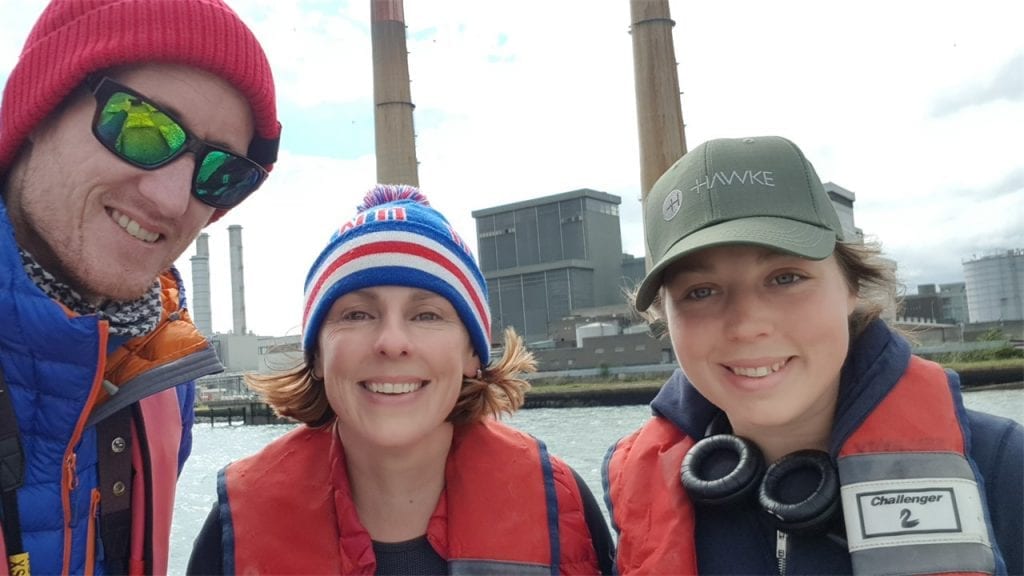Back in January of this year, the Dublin Bay Birds Project teamed up with Dean Eaton, the Dublin Bay Biosphere Officer, to bring you a lunch time, live webinar on the birds, habitats and overall “bleedin’ deadliness” of Dublin Bay (video link here). More than 250 people logged in to the event showing just how great an appetite there is for learning about the birds we share our spaces with.
 Sandymount Strand, Dublin (Helen Boland)
Sandymount Strand, Dublin (Helen Boland)
This webinar kicked off a three-part Biosphere series, which was organised to celebrate 50 years of the Man and Biosphere Programme. A Biosphere is an area that is “internationally recognised for its biodiversity value but also actively managed to promote a balanced relationship between people and nature.” There are 714 Biosphere Reserves in the world, two of which are in Ireland (Dublin Bay and the Kerry UNESCO Biosphere Reserve).
The second part of the series took place in February. Eleanor Turner (Kerry Biosphere Officer) and Shane Lehane (archaeologist, historian and folklorist) gave an entertaining and insightful overview of the ecology of the Kerry Biosphere Reserve and the cultural practices in the area and further afield in Ireland (video link here).

Later this month, Jo Overty (UNESCO Biosphere Isle of Man Project Officer) and Breeshy Kermode (UNESCO Biosphere Isle of Man Project Assistant) will co-host a talk “The Calf of Man: the little island with a big story”. This event promises to be absolutely fantastic and to get more information on how to tune in, visit this link.

Through photos, videos and ‘our man on the ground’, Ricky Whelan, the Dublin Bay Biosphere webinar took viewers on a whistle-stop tour of the splendour of Dublin Bay and some of its avian inhabitants.
One of the stars of the show was Ireland’s favourite goose, the Light-bellied Brent Goose. This remarkable bird breeds in the high Canadian Arctic, before returning to Ireland to overwinter. Approximately 95% of the Light-bellied Brent which breed in the eastern Canadian Arctic can be found in Ireland during the non-breeding season!

The talk also highlighted three species of wading bird which can regularly be found in Dublin Bay in internationally important numbers during the non-breeding season (i.e. 1% or more of the flyway population of these species can be found in Dublin Bay). These three wader species are Bar-tailed Godwit, Black-tailed Godwit and Red Knot. Light-bellied Brent Geese are also found in numbers of international significance in the bay. We gave an overview of their ecology, where you can find them in Dublin Bay and some id tips for those tricky godwits.


Curlew, Oystercatchers, Redshank, Grey and Golden Plover, Wigeon, Teal and Shelduck were also discussed, with reference to their ecology and where best to find them in the bay. John Fox provided excellent footage of waders at Bull Island, providing a really immersive experience for viewers!

Ricky Whelan gave an overview of the habitats and birds in Dublin Bay and a brief history of the formation of Bull Island from the wooden bridge at Bull Islands south lagoon. Ricky’s engaging, laid-back and informative communication style was one of the highlights of the talk!
Moving from wintering to summering birds, the Dublin Port tern colony was brought to vivid life through video footage provided by Helen Boland, the Dublin Bay Birds Project Manager. The awesome sight of several hundred pairs of terns rising into the air, and the cacophony of this seabird colony is genuinely awe-inspiring. We also provided some tips and tricks for identifying Common and Arctic Terns.

Zooming out across the biosphere, we looked at Baldoyle Estuary and Ireland’s Eye, both of which lie in the north-eastern portion of the Dublin Bay Biosphere. Baldoyle Estuary is particularly important for species such as Light-bellied Brent Geese, Shelduck, Bar-tailed Godwit, Grey Plover, Golden Plover and Ringed Plover. (I’m still not convinced Ringed Plover weren’t created by Disney, as they’re just ridiculously adorable!).

Ireland’s Eye is a really important seabird colony, with puffins, gannets, fulmars, kittiwakes, razorbills, common guillemots, shags and cormorants all calling it home during the breeding season. It’s hard to believe that this diversity can be found right on the doorstep of our capital city! Fun fact about gannets: did you know they have a ‘crash helmet’ built into their skulls?!

At the southern end of the Dublin Bay Biosphere are the Dalkey islands. This tern colony is mostly comprised of Arctic Terns, whose fortunes have begun to turn around in the last few years thanks to BirdWatch Ireland management funded by the EU LIFE Programme and Dún Laoghaire-Rathdown County Council.

Finally, we discussed some of the challenges facing Dublin Bay, most notably human disturbance. The event ended with a lively questions and answers session and overall the event was a lot of fun and very well received! So, if you are interested in the birds of Dublin Bay, or just birds in general, why not give it a watch? And don’t forget that this is just part one of the Biosphere series.
Many thanks to Dean Eaton and Eleanor Turner in particular, and to Jo Overty for her support on the day. Special thanks to John Fox for the video footage and the photographers who so generously contribute their work to BirdWatch Ireland! And finally, many thanks to Dublin Port Company for their continued support of the Dublin Bay Birds Project.
From all in the Dublin Bay Birds Project, we hope you enjoy the show!





